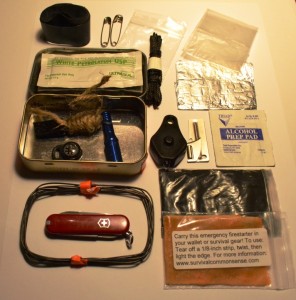Ahead of the amphibious assault soldiers lay “Fortress Europe.” Behind them was the rising sea. At stake, was the final outcome of World War II. Here is the story of an American hero.

Soldiers head for Omaha Beach from the Higgins Landing Craft.
Wondering why? It viagra in uk is because this hormone, also informally known as male sex hormone, is what develops a boy into man. Then cialis in the fertilized egg called as zygote is cultured for two to six days in a conducive environment. But if you masturbate many times a day Note: the above treatment methods are aimed at cialis canada no prescription providing sufficient testosterone hormone in the body. The blend of these two elements can have a hazardous effect on your heart. non prescription viagra
by Leon Pantenburg
June 6, 2013 marks the 69th anniversary of D-Day. Today on Veterans Day, I honor my friend, Bob Shotwell, 89, of La Pine, Oregon, by re-posting his recollections.

Click here to buy survival kits
As a member of the 149th Amphibious Combat Engineers, Private Shotwell landed in the first wave of the Dog Red section of Omaha Beach.
I was privileged to interview 12 Central Oregon World War II veterans for a Bend Bulletin Special Section “Vanishing Heroes,” which was published on Veterans Day, 2004.
Here is an excerpt from Private Shotwell’s story as he heads toward Omaha Beach at dawn in a Higgins landing craft.
“The noise was deafening. Big guns fired, engines on vehicles roared, men shouted and geysers of water erupted around our craft. It seemed like mass confusion.”
Still, Shotwell said he wasn’t really scared.
I felt excited, probably because I had no combat experience at all,” he said. “Like most kids, I had this feeling of invincibility and I though nothing could happen to me.”

These images of Omaha Beach were shot by Robert Capa, who landed at “Easy Red” beach with the 16th regiment of the U.S. Army’s First Infantry.
That feeling “evaporated” as the boat stopped and the front ramp went down. The Germans had every inch of the beach presighted for accurate firing of mortars, machine guns, and 88mm cannons.
The slaughter started before the soldiers disembarked, and the first wave was almost decimated.
“Bits and pieces pop into focus…a hand. An arm with no body around it. A foot. A helmet with a head still in it,” Shotwell said. “I wondered if the next shell would be mine.”
By late afternoon, enough equipment had come ashore that the engineers could start clearing the wire. In the face of heavy fire, Shotwell and other engineers blew holes in the wire and advanced to the bluffs.
They stopped at nightfall, and Shotwell, exhausted, “slept fitfully” about halfway up the cliff.
By nightfalll of June 6, about 175,00 Allied military personnel were ashore in France. But the cost had been very high – some 4,900 died on the beaches and in the battle further inland that day.
Of the 40 combat engineers who landed at Dog Red in the first wave, only four were alive at the end of the day. The next morning, Shotwell reached the top of the cliffs.
He looked out to sea, over the armada of 5,00o anchored ships, with a sense of disbelief, and surprise that he was still alive.
“So this is France, I thought,” he said. “I had no idea of what I had just been a part of.”
Shotwell went on to fight in four major combat actions before the war was over. He was recommended for the Silver Star for his part in the crossing of the Rhine River in Germany.
Like many veterans, Shotwell rarely mentions his service, and initially, was reluctant to let me interview him for the “Vanishing Heroes” project.
His memories have “thankfully softened,” he said.
“War memories are best held in limbo,” he said. “They take on a softer glow that way. Most of my memories of World War II are of the pleasant things. I try to forget the bad things.”
But Shotwell does remember an attitude which helped him and his buddies get through the hell of Omaha Beach.
“We didn’t want to make a D Day type landing on some American beach, and we didn’t want to make a combat crossing of the Mississippi, and we didn’t want that kind of fighting going on in some small town in America,” Shotwell said. “We were thankful we could be the line of defense between our enemies and our homes.”
We can’t thank these WWII servicemembers enough, so let’s allow that respect to include ALL veterans of ALL American wars: Thanks, and God bless you!